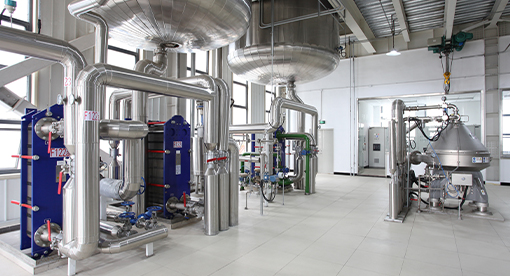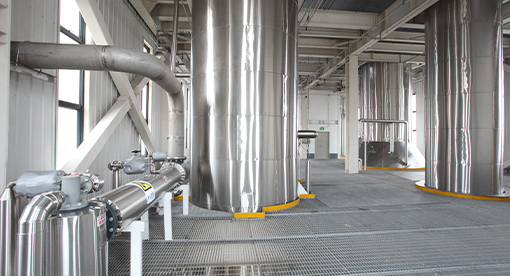
Refining Vegetable Oils: Chemical and Physical Refining
Sep 18, 2024
As I sit down to share my thoughts on the intricacies of vegetable oil refining, I'm reminded of the journey that so many industries have taken to perfect this vital process. Over the past 20 years, my company, Myande Group Co., Ltd., has been at the forefront of providing cutting-edge solutions for the edible oil industry. We've seen firsthand the challenges and triumphs that come with refining vegetable oils, and today, I want to delve into the nuances of chemical and physical refining, offering insights that I hope will be valuable to you.

Understanding the Process: The Foundation of High-Quality Edible Oils
Refining vegetable oils is an essential process that transforms crude oils into the high-quality, edible products we all rely on. This process is critical not just for removing impurities and undesirable components, but also for ensuring that the final product is safe, appealing, and meets the high standards expected by consumers. There are two primary methods of refining that we utilize in our projects: chemical refining and physical refining. Each method has its own unique steps, advantages, and applications, depending on the type of oil being processed and the desired outcome.

Chemical Refining: A Tried-and-True Method
Chemical refining is a traditional and widely-used method that involves a series of carefully controlled steps.
1. Degumming: The first step in chemical refining is degumming, where phosphatides, commonly known as gums, are removed from the oil. These phosphatides can cause cloudiness in the final product, which is undesirable. To remove them, water or acid is often used to hydrate the phosphatides, making them easier to separate from the oil.
2. Neutralization: Next, the free fatty acids (FFA) in the oil are neutralized using alkali substances, such as sodium hydroxide. This step is crucial because FFAs can lead to off-flavors and reduce the shelf life of the oil. During neutralization, soap is formed as a byproduct, which is then removed through washing or centrifugation.
3. Bleaching: In the bleaching stage, activated clay is used under vacuum conditions to absorb color pigments and remove undesirable metals, further improving the oil's appearance. This step is essential for producing a clear, bright oil that is visually appealing to consumers.
4. Deodorization: Finally, the oil undergoes deodorization, where it is subjected to high-temperature steam distillation. This step eliminates any remaining odors and flavors, ensuring a neutral taste and extending the oil's shelf life. Chemical refining is particularly suitable for oils with high levels of phospholipids, such as cottonseed oil, as it effectively removes these components to produce a high-quality final product.
Physical Refining: A Modern and Efficient Alternative
Physical refining, on the other hand, offers a more streamlined approach by skipping the neutralization step and instead removing free fatty acids during the deodorization phase. This method consists of the following key steps:
1. Degumming: Similar to chemical refining, physical refining begins with degumming. However, the process typically requires less extensive treatment, making it more efficient in terms of time and resource use.
2. Bleaching: The oil is then mixed with bleaching earth, which helps remove color pigments and impurities. After this, the spent adsorbent is separated from the oil through filtration, resulting in a cleaner, clearer product.

3. Deodorization: In physical refining, deodorization plays a dual role. Not only does it remove volatile compounds that can cause off-flavors and odors, but it also removes free fatty acids, all without prior neutralization. This can lead to lower oil losses and better retention of nutrients, making it a preferred method for oils with lower phospholipid content.

Physical refining is often favored for oils like palm oil and coconut oil, where lower gum content and higher FFA levels make this method more efficient. By reducing the number of chemicals used and generating less waste, physical refining is also considered more environmentally friendly and cost-effective, which is increasingly important in today's market.
The Choice Between Chemical and Physical Refining
As you can see, both chemical and physical refining aim to produce high-quality edible oils, but they do so through different approaches. The choice between the two methods depends on various factors, including the specific characteristics of the crude oil being processed, economic considerations, and environmental impact. It's a decision that requires careful evaluation, and one that we've helped our clients navigate successfully across over 800 vegetable oil processing lines worldwide.
Now that we've covered the basics of refining, you might be wondering about the specific differences between these two methods and the chemicals involved. Let's dive deeper into these aspects to give you a clearer understanding.
What is the Difference Between Physical and Chemical Refining of Oil?
The primary difference between physical and chemical refining lies in how impurities and free fatty acids are removed from crude oils. Here's a detailed comparison that I hope will clarify the distinctions:
Physical Refining:
FFA Removal: In physical refining, free fatty acids are removed during the deodorization step, which involves high-temperature steam distillation. This process not only eliminates odors and flavors but also reduces FFA content, resulting in a high-quality oil.
Degumming: While degumming is necessary in physical refining, the process is less extensive compared to chemical refining. Citric or phosphoric acid is typically used to remove phosphatides (gums) from the oil.
Chemical Use: One of the significant advantages of physical refining is that it requires fewer chemicals. No alkali is used, meaning no soap is formed during the process, which contributes to higher oil yields and lower waste production.
Waste Production: The reduced chemical usage in physical refining means that less waste is generated, making it a more environmentally friendly option.
Oil Yield: Higher oil yields are usually achieved with physical refining since there are no losses associated with soap formation or neutralization.
Ideal Oils: Physical refining is best suited for oils with low gum content and high FFA levels, such as palm oil and coconut oil.
Chemical Refining:
FFA Removal: In chemical refining, free fatty acids are neutralized using alkali substances, resulting in the formation of soap. This soap must then be removed through washing or centrifugation.
Degumming: Chemical refining requires a more intensive degumming process to ensure that all phosphatides are effectively removed from the oil.
Chemical Use: Chemical refining involves the use of more chemicals, such as alkali, which can lead to soap formation. This can result in higher oil losses and more waste production.
Waste Production: Due to the additional chemical steps, chemical refining generally produces more waste, which can have a greater environmental impact.
Oil Yield: Although chemical refining can produce high-quality oils, the oil yield may be slightly lower due to the losses associated with soap formation and the more extensive degumming process.
Ideal Oils: Chemical refining is particularly well-suited for oils with high levels of phospholipids, such as cottonseed oil, where the thorough removal of impurities is necessary.
In summary, the choice between physical and chemical refining depends on the specific characteristics of the oil being processed, as well as the desired quality and yield of the final product.
What Chemicals are Used to Refine Vegetable Oil?
In the refining process, several chemicals play crucial roles in removing impurities and enhancing the quality of vegetable oils. Here are the primary chemicals involved in each stage of the process:
1. Phosphoric Acid: Used during the degumming process, phosphoric acid helps to hydrate and remove non-hydratable phospholipids (gums) from the oil. This step is essential for improving the oil's clarity and stability.
2. Alkali (Sodium Hydroxide): In chemical refining, sodium hydroxide is employed to neutralize free fatty acids (FFA) through a process called neutralization or deacidification. This reaction produces soap, which is then removed from the oil.
3. Bleaching Earth (White Clay): During the bleaching process, activated clay is used to adsorb and remove pigments and other impurities from the oil. This step enhances the oil's color and clarity, making it more appealing to consumers.
4. Water and Steam: While not chemicals in the traditional sense, water is often used in conjunction with phosphoric acid for degumming, and steam is utilized during deodorization to remove volatile compounds and further purify the oil.
These chemicals and processes are essential for producing high-quality edible oils, ensuring that the final product is free from undesirable components while maintaining its nutritional value and stability.
Conclusion
Refining vegetable oils, whether through chemical or physical methods, is a complex process that requires careful consideration of the oil's characteristics and the desired outcomes. Both methods have their advantages and are suited to different types of oils, but the ultimate goal is the same: to produce high-quality, safe, and appealing edible oils that meet the needs of consumers worldwide.
At Myande Group Co., Ltd., we've had the privilege of working with clients in over 80 countries, helping them navigate these processes and achieve their goals. I hope that this article has provided you with valuable insights into the refining process, and I look forward to continuing to share our expertise with you. Whether you're considering physical or chemical refining for your next project, we're here to support you every step of the way.


